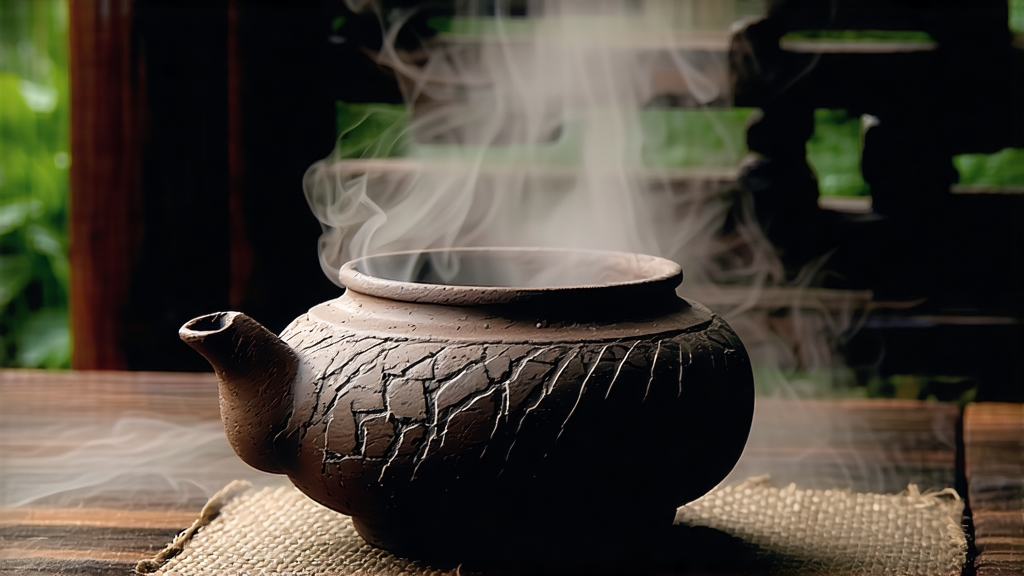
Tucked away in the humid, karst-pocked mountains of southern China’s Guangxi Zhuang Autonomous Region, Liu Bao tea has spent four centuries quietly fermenting itself into legend. To most Western drinkers “dark tea” begins and ends with ripe pu-erh, yet Liu Bao is the older, subtler sibling—an heirloom whose flavour carries the minerality of limestone caves, the sweetness of longan fruit, and the unmistakable scent of betel nut once chewed by dockworkers along the Pearl River. This article invites you to meet Liu Bao on its own terms: as a living archive of trade routes, ethnic craftsmanship, and microbial artistry.
-
Historical footprints
Liu Bao takes its name from the market town of Liubao in Wuzhou prefecture, the historic collection point for leaf grown by Yao and Han mountain farmers. During the Ming dynasty (1368-1644) the tea was compressed into large bamboo baskets and rafted down the Xun River to Guangzhou, where it was loaded onto “tea boats” bound for Hong Kong and, ultimately, Southeast Asia. By the Qing era it had become a currency of the diaspora: labourers in Malaya’s tin mines drank it to ward off dampness, while Peranakan Chinese used it as dowry tea, believing its ability to improve with age mirrored a family’s rising fortune. British port records from 1886 list “Liew Pow” alongside Keemun and Lapsang Souchong, proof that the West once tasted this mellow darkness before forgetting it. -
Terroir and leaf
The micro-climate matters. Morning fog rising off the Qianjiang and Xun rivers deposits alkaline mist on bushes growing at 200–600 m elevation. The indigenous cultivar—Camellia sinensis var. sinensis ‘Guangxi Daye’—bears leaves broader and thicker than Yunnan’s Da Ye, allowing deep penetration of the wet-pile microflora that define Liu Bao. Soils are a limestone-red clay mix rich in calcium and iron, elements that later manifest as a tingling minerality on the tongue. -
Craft: from basket to cave
After spring picking the leaves undergo primary kill-green in a 200 °C wok for eight minutes—long enough to halt oxidation but preserve leaf enzymes. Rolling is brief, 15 min, to keep stems intact for airflow. The crucial twist is “dui wo” (wet piling): leaves are sprayed with mountain water, heaped 70 cm high, and covered with jute sacks. Indigenous microbes—Bacillus subtilis, Aspergillus niger, and a rare yeast Pichia fermentans—ferment the pile for 10–18 days while internal temperature climbs to 55 °C. Masters “fan dui” (turn) the heap every three days, judging readiness by the emergence of a golden “jin hua” (yellow mold) and the scent of dried longan. After drying under low charcoal heat the tea is packed into 40 kg cylindrical bamboo baskets lined with wild banana leaf; the bamboo imparts a greenish top note that balances the earthiness. Finally the baskets are moved into limestone caves around Wuzhou where relative humidity hovers at 85 % and temperature stays 18–22 °C year-round. Here Liu Bao sleeps, sometimes for decades, breathing through bamboo slats and exchanging molecules with the karst air. -
Flavour arc: young vs. aged
A 2019 basket offers cocoa shell, wet bark, and a faint smokiness reminiscent of pinewood; the liquor is dark amber with a brisk, astringent edge that fades after the third infusion. Twenty years in cave transforms the tea into something velvety: mahogany colour, aroma of betel nut and camphor, a finish that leaves a cooling sensation on the gums. The Chinese describe this as “chen xiang” (aged resonance), a perfume impossible to replicate by any shortcut. -
Brewing protocols
Western kettle: 5 g leaf, 500 ml soft water, 95 °C, 4 min. First pour awakens the leaf; discard. Second steep yields a mellow cup that pairs with aged Gouda.
Gongfu route: 8 g in a 120 ml Yixing clay teapot seasoned only for Liu Bao. Flash rinse, then 10 s, 15 s, 20 s… up to twelve infusions. Note how the colour light